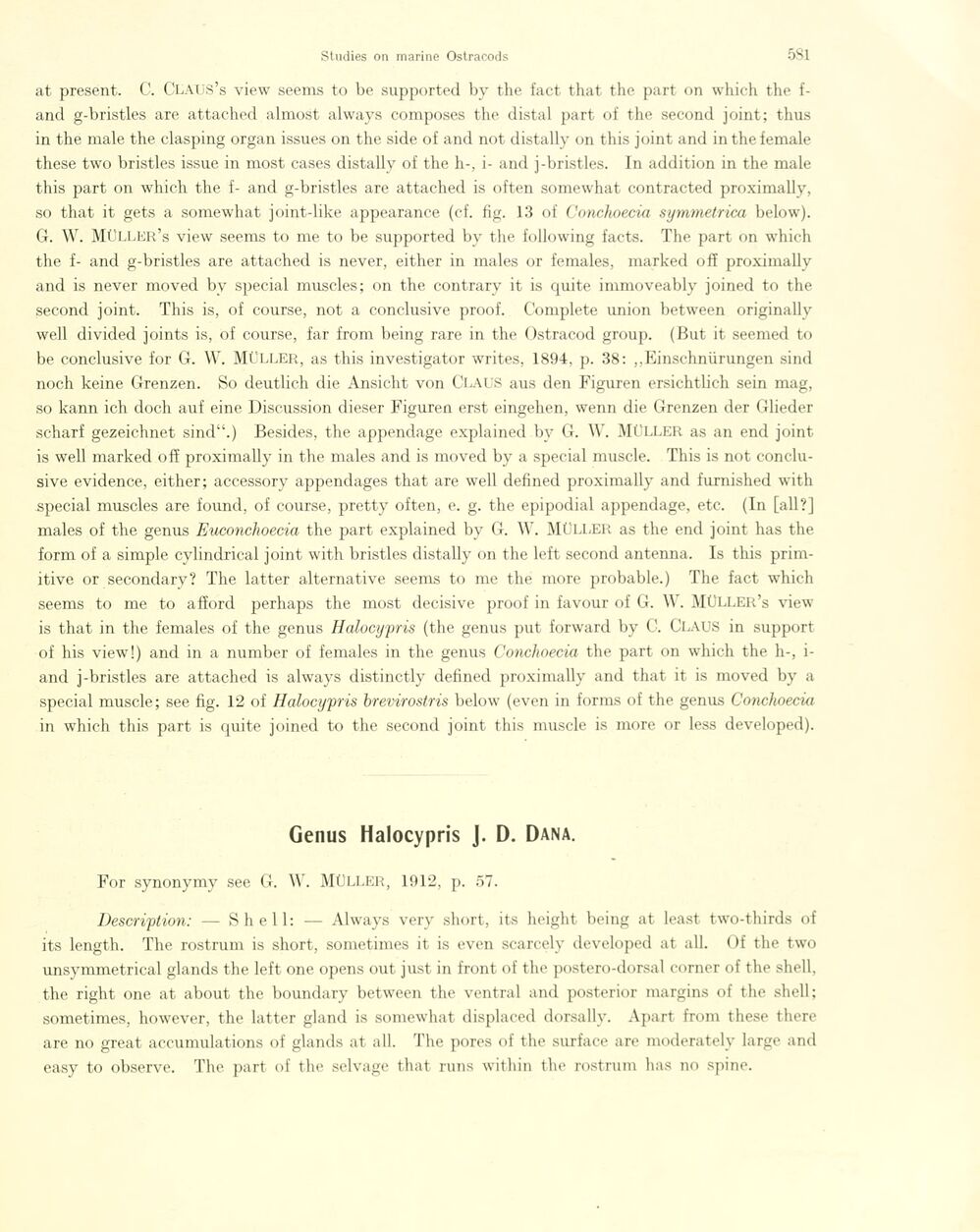
Full resolution (JPEG) - On this page / på denna sida - Sidor ...

<< prev. page << föreg. sida << >> nästa sida >> next page >>
Below is the raw OCR text
from the above scanned image.
Do you see an error? Proofread the page now!
Här nedan syns maskintolkade texten från faksimilbilden ovan.
Ser du något fel? Korrekturläs sidan nu!
This page has never been proofread. / Denna sida har aldrig korrekturlästs.
at present. C. Claus’s view seems to be supported by the faet that the part on which the
f-and g-bristles are attached almost always composes the distal part of the second joint; thus
in the male the clasping organ issues on the side of and not distally on this joint and in the female
these two bristles issue in most cases distally of the h-, i- and j-bristles. In addition in the male
this part on which the f- and g-bristles are attached is often somewhat contracted proximally,
so that it gets a somewhat joint-like appearance (cf. fig. 13 of Conchoecia symmetrica below).
G. W. MÜLLEr’s view seems to me to be supported by the following facts. The part on which
the f- and g-bristles are attached is never, either in males or females, marked o ff proximally
and is never moved by special muscles; on the contrary it is quite immoveably joined to the
second joint. This is, of course, not a conclusive proof. Complete union between originally
well divided joints is, of course, far from being rare in the Ostracod group. (But it seemed to
be conclusive for G. W. MULLER, as this investigator writes, 1894, p. 38: „Einschnürungen sind
noch keine Grenzen. So deutlich die Ansicht von Claus aus den Figuren ersichtlich sein mag,
so kann ich doch auf eine Discussion dieser Figuren erst eingehen, wenn die Grenzen der Glieder
scharf gezeichnet sind“.) Besides, the appendage explained by G. W. MÜLLER as an end joint
is well marked off proximally in the males and is moved by a special muscle. This is not
conclusive evidence, either; accessory appendages that are well defined proximally and furnished with
special muscles are fourni, of course, pretty often, e. g. the epipodial appendage, etc. (In [all?]
males of the genus Euconchoecia the part explained by G. W. MULLER as the end joint has the
form of a simple cylindrical joint with bristles distally on the left second antenna. Is this
primitive or secondary? The latter alternative seems to me the more probable.) The fact which
seems to me to afford perhaps the most decisive proof in favour of G. W. MÜLLER’s view
is that in the females of the genus Halocypris (the genus put forward by C. Claus in support
of his view!) and in a number of females in the genus Conchoecia the part on which the h-,
i-and j-bristles are attached is always distinetly defined proximally and that it is moved by a
special muscle; see fig. 12 of Halocypris brevirostris below (even in forms of the genus Conchoecia
in which this part is quite joined to the second joint this muscle is more or less developed).
Genus Halocypris J. D. Dana.
For synonymy see G. W. MULLER, 1912, p. 57.
Description: — Shell: — Always very short, its height being at least two-thirds of
its length. The rostrum is short, sometimes it is even scarcely developed at all. Of the two
unsymmetrical glands the left one opens out just in front of the postero-dorsal corner of the shell,
the right one at about the boundary between the ventral and posterior margins of the shell;
sometimes, however, the latter giand is somewhat displaced dorsally. Apart from these there
are no great accumulations of glands at all. The pores of the surface are moderately large and
easy to observe. The part of the selvage that runs within the rostrum has no spine.
<< prev. page << föreg. sida << >> nästa sida >> next page >>